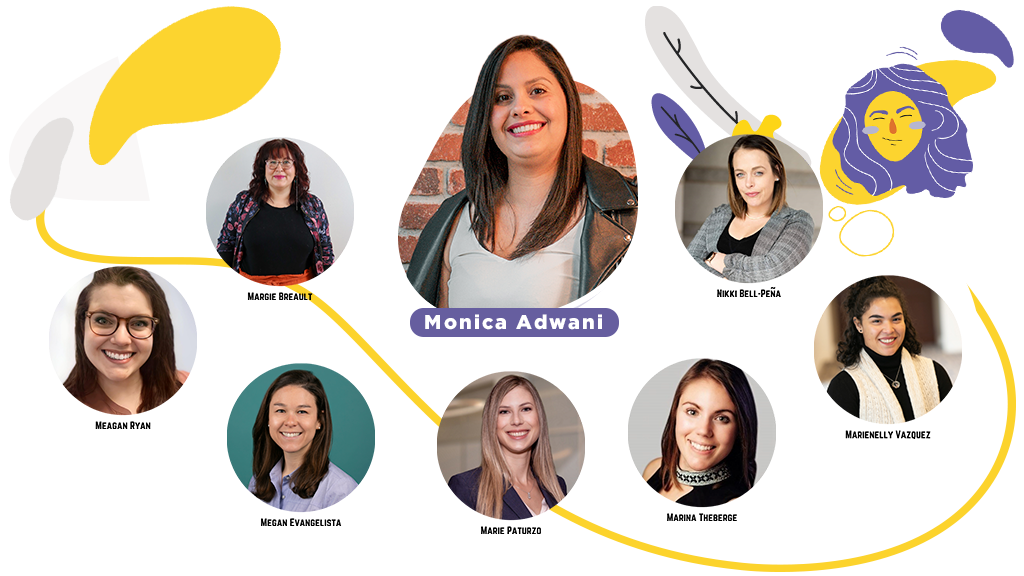Learn More
x




After introducing the LatinX community in numbers earlier this week, we are ready to get more specific.
Since the goal of the Hispanic Wealth Project is community development via housing, small business development and wealth building, part of the research is focused on real estate in the US.
Wealth is the accumulation of money, property or valuable goods that a person, country, or community owns. It is the data from this type of accumulation that we will be analyzing today.
Considering the fact that Latinx people played an important role in population and workforce growth, as well as having contributed to the development of new companies, understanding the paths of wealth creation for this group offers a glimpse into the future economic landscape in the US.
In the meantime, it’s important to mention that the average household income of Latinx people in the US increased by 63.6% between 2016 and 2019, the biggest increase of any demographic group.
The growth in household wealth has narrowed the wealth gap between non-Latinx and Latinx. However, Latinx people do not diversify their assets, a factor that contributed to the Latinx losing two-thirds of their household wealth after the Great Recession.
Home values represent more than half (52%) of Latinx assets, counting both primary residence and investment properties. In 2019, Latinx people averaged $95,000 in home equity. Home equity is residential equity, meaning your paid home can serve as a guarantee for you to obtain credit.
Between 2016 and 2019, there were 818,000 new Latinx homeowner families, the biggest increase in three years for Latinx people since before the Great Recession.
As we have already said, the average age of Latinx people in the US is 29.8 years old, which means that a large part of the community has not yet reached the age of accumulating wealth, let alone buying a home.
Across all demographic groups, wealth tends to be lower for people under 35 years of age. In 2019, the survey showed that the difference in household income between Latinx and non-Latinx White people under 35 was smaller than the average.
Latinx people are the least likely to have student loan debt, with a rate of just 14.3% while the non-Latinx White population has a rate of 36.9%.
However, Latinx are also less likely to have a college education, only 17.6% of Latinx people aged 25 and older have a bachelor’s degree, compared to 36.9% of non-Latinx White people and 22.5% of the Black population.
Being the owner of your own house, in addition to being a dream come true, creates a kind of stability and tranquility that changes a family’s relationship with money, which is why it is so important to research.
With a homeownership rate above 48%, Latinx people are on track to reach a 50% rate over the next 5 years. This can be considered a major turning point in the relationship between this population and the country’s economy.
Hispanic homeowners have a net worth of $171,900, 28x more than the $6,210 Latinx tenants.
Real estate ownership is so relevant that when looking at the wealth of Latinx homeowners compared to White family owners, the gap narrows considerably.
The ratio of the difference of $1 for every $5 drops to just under $1 for every $2 in this scenario.
Between 2016 and 2019, Latinx people increased the number of investment properties by 33.1%, the largest increase of any demographic group.
At the same time, non-Hispanic White people, non-Hispanic Black people, and the general population decreased the rate of investment property during the same period.
As of March 2021, 8.4% of Latinx borrowers were reducing their payments and 0.7% were at least 60 days past due. This means that the odds of a Latinx person failing to pay their installments were 1.5 to 2.3 times higher than the rest of the population.
However, this trend appeared after the impact of the pandemic on the poorest communities. That is to say that it is not necessarily a number to stick to.
Down payment is considered the biggest obstacle for anyone looking to buy a house. More than one in three Latinx tenants surveyed by the HWP (36%) reported not saving enough for a down payment as the main reason they could not buy a home.
A recent survey conducted by the US Mortgage Insurers (USMI) found that 30% of Latinx people believed 20% of the down payment was necessary to obtain a mortgage, and only 7% of Latinx accurately reported that less than 5% was the minimum payment required to buy a house.
Less than half (44%) of Hispanic respondents in the 2021 HWP Survey reported growing up in a home owned by their family, compared with 57% of non-Hispanic White respondents. According to the Urban Institute, young adults who grow up in a parent’s home are 7 to 8 percent more likely to become homeowners.
However, 53% of Latinx tenants reported plans to purchase a home and more than a third (36%) plan to purchase an investment home in the next 5 years. The proportion of Latinx people looking to buy investment property this year was nearly 3x that of non-Latinx White buyers.
The good news for anyone looking to invest in the financial development of the LatinX community is that Latinx people are reaching the age of worrying about homeownership. As we’ve said, the average age is 29.8 years old, but nearly one in three Latinx people is currently in their best home-buying years, 25-44.
This means that many are buying a home for the first time right now. According to the 2021 HWP Survey, nearly three-quarters of Latinx homeowners (72.6%) have owned their homes for 15 years or less, and one in three (30%) have owned their homes for less than 5 years.
By comparison, we have half (46%) of non-Latinx White respondents who have owned a home for 15 years or more.
The same phenomenon is observed in real estate investments. One in three (34%) Latinx investors purchased their first investment property less than 5 years ago, and 83.5% have owned it for 15 years or less.
Between 2010 and 2019, Latinx people accounted for more than half of the overall growth in homeownership in the US and more than 40% of the growth in homeownership. Given that they are approaching home-buying age, the Latinx community will be key to real estate growth in the coming decades.
About 53% of Latinx renters plan to stop leasing in the next 5 years. This trend is even more pronounced among Latinx business owners (67%) and Latinx people currently living in multigenerational households (52%).
Looking ahead, the contribution is only growing; the survey projects that in the next 20 years, 70% of the growth of homeownership will come from the Latinx community and all the growth of homeownership will come from non-White families.
More than a third (36%) of Latinx people plan to buy an investment property in the next 5 years, with one in five actively looking to buy in the next 12 months.
The proportion of Hispanics willing to shop this year is more than double the general population and nearly triple the number of non-Hispanic White shoppers. This contributes to another result pointed out in the survey, which says that Latinx were the most likely to say they invested extra money in real estate. Latinx people are twice as likely to select real estate investments as their top investment of choice than non-Latinx White investors.
What we can extract from this part of the study is: Latinx people in the US are constantly growing, developing and prospering. Each year, at each period followed by the research, the American dream presents itself to a population that clings to it tooth and nail.
Latinx are here to stay and multiply, and our best advice is for the housing market to turn its eyes this way. We like stability and are always looking for a place to take root.
BRZ is a great example of Latinx people with deep roots in the US market and we are always here for a chat, to discuss ideas and enjoy a cup of coffee. Looking for guidance to get into the LatinX market? Just say hello!
Learn More

As immigrants, it is important to know what type of coverage you will need in order to be truly protected while living here in America. To help, we are outlining the 5 ESSENTIAL TYPES OF INSURANCE FOR THOSE WHO HAVE JUST ARRIVED IN THE USA.

On May 5th, the Central Mass Conference for Women will be taking place at the AC Hotel. This conference aims to inspire, connect, motivate and move women through every stage along their path.

To continue our celebration of Women’s month, we will discuss women who migrated to America and went on to change the world.

We are an insurance company made by people for people. A community that speaks tyour language, with people who care about your future! Here you can find all the protection and care that a home offers. Come and join us!
Get a Quote

Need help? Chat with BRZ!
x